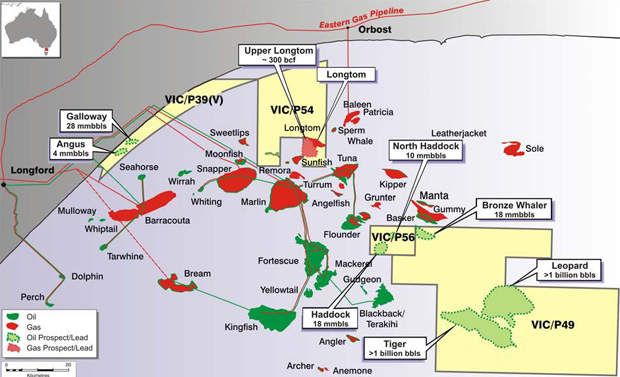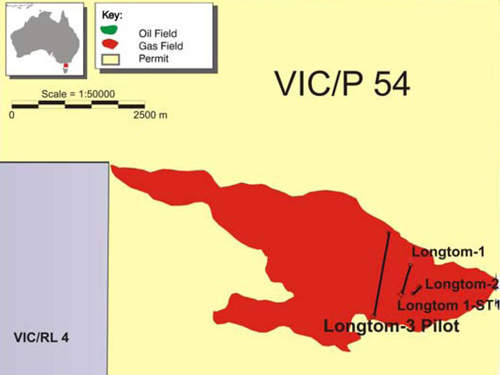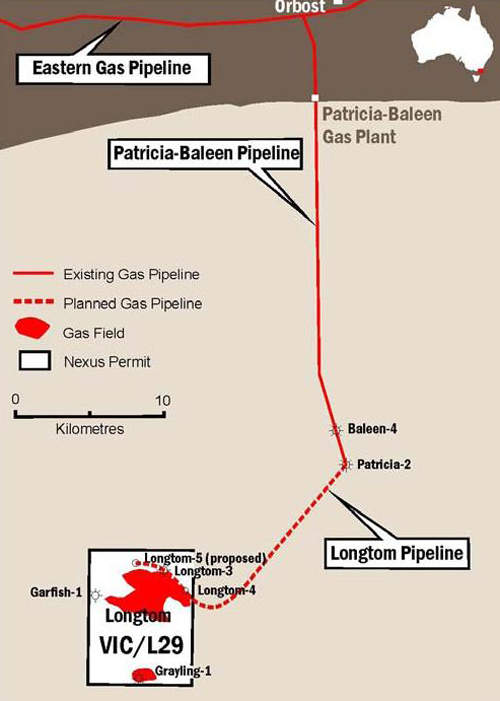The Longtom gas field lies in the Gippsland Basin, offshore south-east Australia. The field is situated in the exploration permit VIC / P54 at a water depth of 56m (185ft). Nexus Energy is the operator and owns 100% interest in the field.
First production from the Longtom field began in October 2009 and $315m was invested in its development.
Discovery of the Longtom field
The Longtom gas field was originally discovered by BHP Petroleum in January 1995 with the drilling of the Longtom-1 / ST1. The well encountered dry gas. BHP declared the field non-commercial due to the poor quality of the reservoir.
In 2004, Nexus drilled the Longtom-2St-1 well, encountering a 400m gas column in five distinct reservoir zones. The Ocean Patriot semi-submersible drilling rig drilled the Longtom-3 well from July to September 2006. The well flowed at a rate of 75 million standard cubic feet per day (MMscf), confirming the commercial viability of the field. It was suspended as a future producer.
Geology and reserves
The Longtom field reservoir is of the Admiral Formation, belonging to the Emperor Subgroup.
The field is estimated to contain 268 billion cubic feet (Bcf) of proven gas reserves and 2.8 million barrels of proven condensate reserves.
Field development
Nexus’s field development plan was submitted in June 2007 and was approved by the Australian government in September 2007.
Nexus started drilling development well Longtom-4 in June 2008. The West Triton jack-up rig was contracted to drill the well to a total depth of 4,648m. The well was completed and successfully flow tested in September 2008.
A 19km-long, 12in-diameter Longtom pipeline was laid at the field using the Aussie-1 pipelay barge. The pipeline is carbon steel concrete coated. Both the Longtom-3 and Longtom-4 wells were tied back to the pipeline and brought into production.
In April 2010, production at the field was halted after low quantities of mercury were discovered in the gas produced from Longtom-4. Nexus invested A$2m in the installation of mercury removal equipment at the Patricia Baleen gas plant. Production at the field resumed in October 2010.
Longtom production and exports
Gas is produced through two horizontal subsea wells and production trees installed at water depths of 51-57m. A high integrity pressure protection system (HIPPS) is installed near Longtom-4. The HIPPS protects the pipeline downstream from over pressure.
The two subsea wells are tied back to the Patricia Baleen offshore gas pipeline through the Longtom pipeline.
Produced gas is transported by the Patricia Baleen offshore gas pipeline to the Patricia Baleen gas plant in Orbost, Australia.
Gas and condensate are separated at the gas plant. Gas is transported to Melbourne and Sydney through the Eastern Gas Pipeline. The condensate is transported to Shell’s refinery in Geelong, Australia.
Nexus has signed an agreement with Santos for the sale of 333bcf of gas and four million barrels of condensate over the life of the field.
Contracts for Longtom
Trident Darwin Offshore Logistics Base Joint Venture was awarded the contract to install all the pipes and umbilicals for the Longtom field.
The HIPPS package and the Longtom-4 subsea tree were built by Cameron. The control umbilicals were fabricated by UK-based Duco.
Projections for the future
Re-mapping of the Longtom field area revealed the existence of additional prospects. Nexus is examining the development of the Longtom South prospect, which is located 3.5km from the existing infrastructure.
A third production well, Longtom-5, is also expected to be drilled at the field; however, drilling of Longtom-5 will begin after the Longtom South prospect is drilled. Nexus plans to commence drilling at the prospect in mid-2012.
Plans to develop the Longtom Upper prospect as an extension to the field are also being considered. The prospect could add up to 250Bcf of gas reserves.
Further infill wells are to be drilled at the field after 2014.
Nexus is also considering exploration of the Longtom West prospect. Any reserves discovered will be tied-back to the existing infrastructure.




